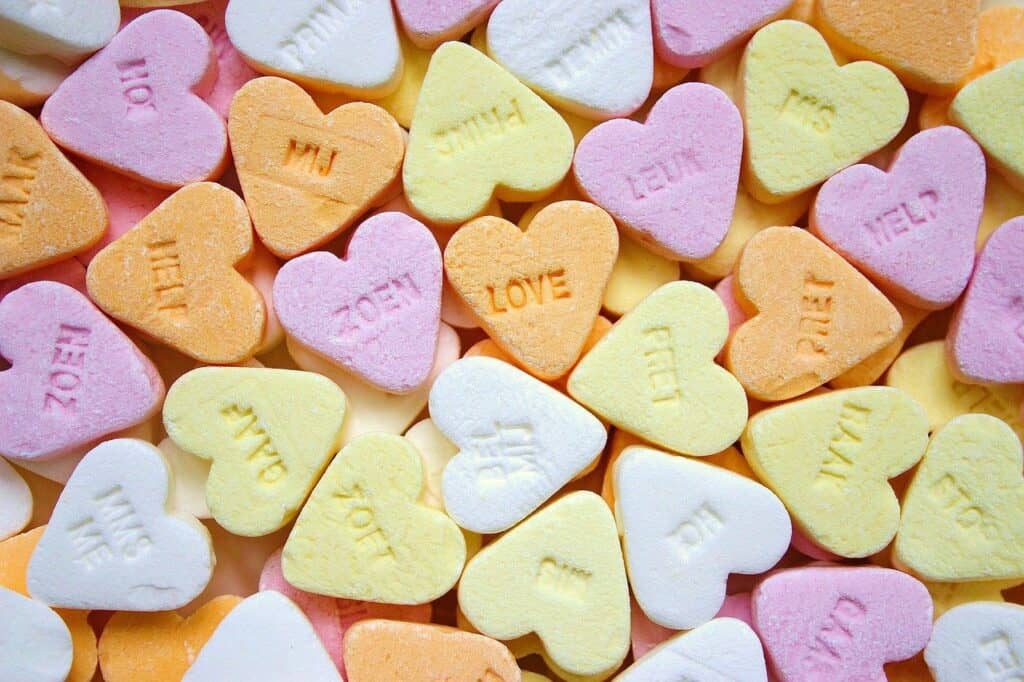The aroma of chocolate and love is seductive. Valentine’s Day will be here before we know it, and there will be plenty of chocolate to go around. Candy aisles in stores have grown to feature anything from large chocolate hearts to sticky gummy delights. Valentine’s Day appears to be the unofficial start of months of sugar binges, as we munch our way through sweet delights until the last Easter Peep is gone.
Please don’t misunderstand us. We like to eat delicacies as well. We wouldn’t be your favorite Orthodontics practice if we didn’t also warn you about the consequences of sugar on your child’s (and your) teeth. However, don’t be scared. You can count on us to be there when you need us. We’ll show you which Valentine’s Day candy is best for your teeth, as well as how to keep your sugar intake in check.
Cavities form when bacteria in your mouth convert sugar to acid, causing the enamel of your teeth to erode. Tooth decay and cavities are the result of this deterioration.
Sugar coats your teeth and gums in the same way that any other food does. Some of it will be helped by saliva, but not all of it…particularly the sticky, chewy, gummy stuff. Suckers and hard sweets are also hard on your teeth, since they linger in your mouth for a long time and press on the same teeth over and over again. Sugar feeds oral microorganisms, which can cause tooth decay if left on the teeth for long periods of time.
We understand that we won’t be able to persuade everyone to give up candy, but we can help our parents set limits and make informed decisions. Both the type of sweets served and the amount of time they are given are critical. We don’t want to detract from the enjoyment. All that matters to us is that we don’t have cavities as a result of all the enjoyment! So, how can you know which Valentine’s Day treats are the best for your teeth?
Select appropriate treats for the occasion. Soft chocolates are the ideal choice since they melt fast and are easy to remove from teeth. Sticky, firm, or gummy confectionery that sticks to your teeth for an extended period of time should be avoided.
- Candy should only be consumed as a dessert after a meal. This will not only enhance your chances of drinking water and flushing some of the sugar out of your system, but it will also keep sugar from bombarding your teeth all day.
- Hydrate. After each food, drink plenty of water to help the sugar exit your system. Staying hydrated also aids saliva production, which is necessary for the removal of sugar and bacteria as well as the maintenance of dental health.
- Brush and floss your teeth after a few minutes. Brushing your teeth after a sugary meal is a good idea. It is not advisable to wash teeth that have been harmed by acid attacks, which occur every time you eat. Brushing after 30 minutes allows minerals to re-deposit on the enamel and your mouth’s pH to return to normal.
- Sealants. Dental sealants are a cavity-prevention technique that coatings teeth with a thin, protective layer that keeps bacteria and food out. Sealants keep sugar and bacteria out of molar fissures and other hard-to-reach areas of the teeth.
- Don’t forget about the non-sugary items. We’re not saying you can’t celebrate with candy hearts and chocolate, but don’t make candy the major prize. Remember that the ideal Valentine’s Day sweets for your teeth does not exist. Regardless of the circumstances, we are all human beings. We all enjoy a piece of chocolate or sweets now and then. Remember, Valentine’s Day is only one day, not an entire month!

